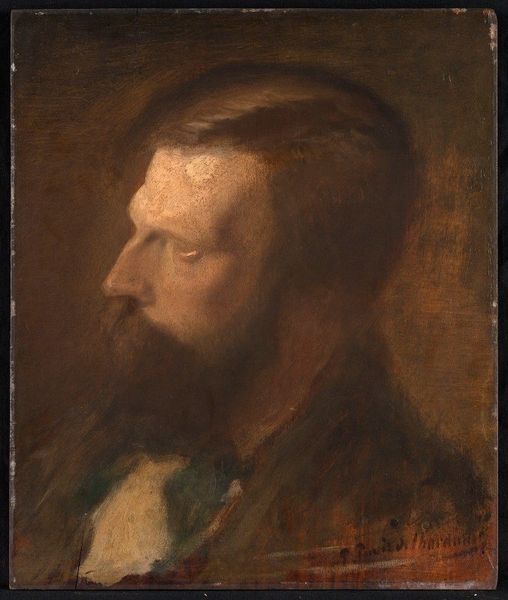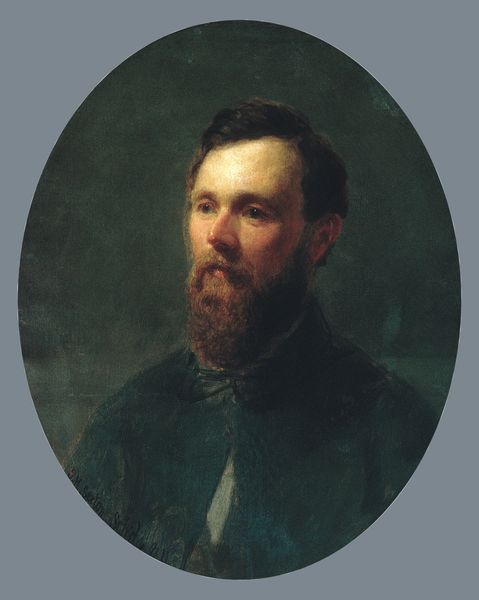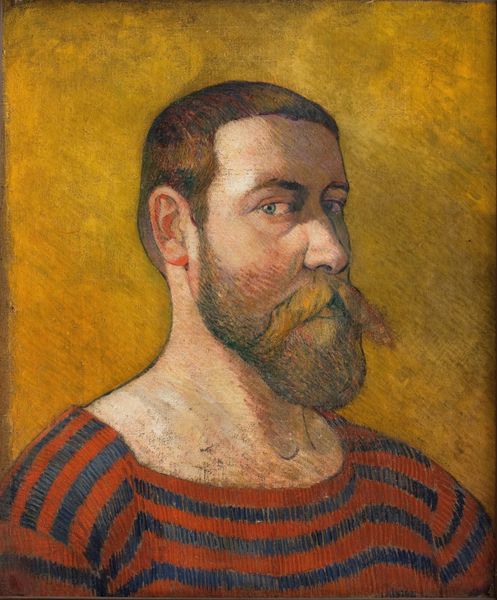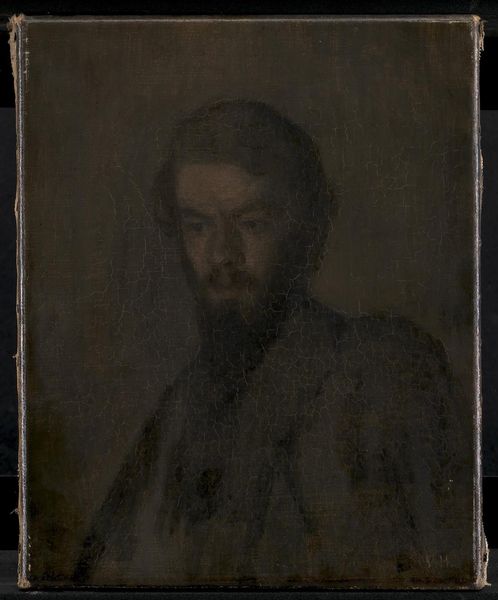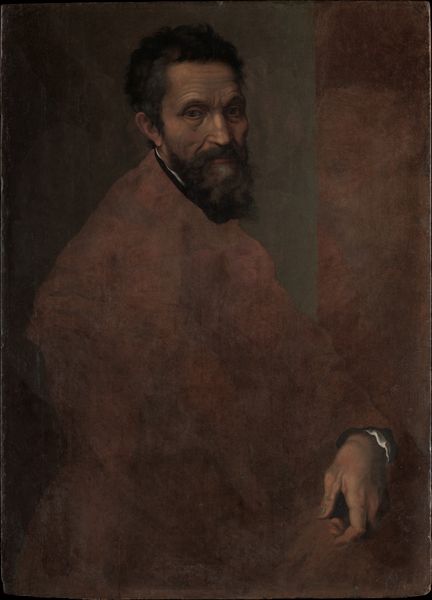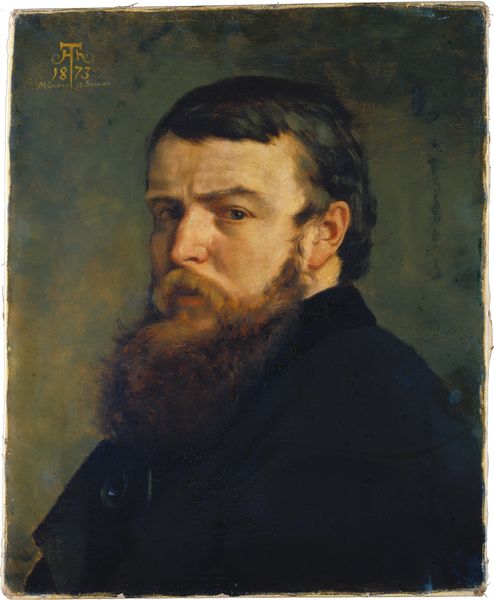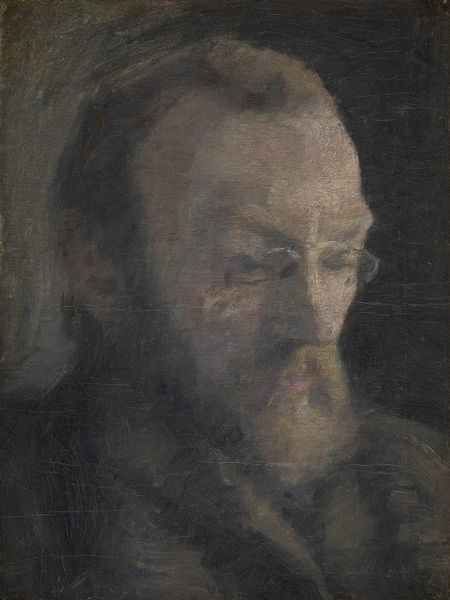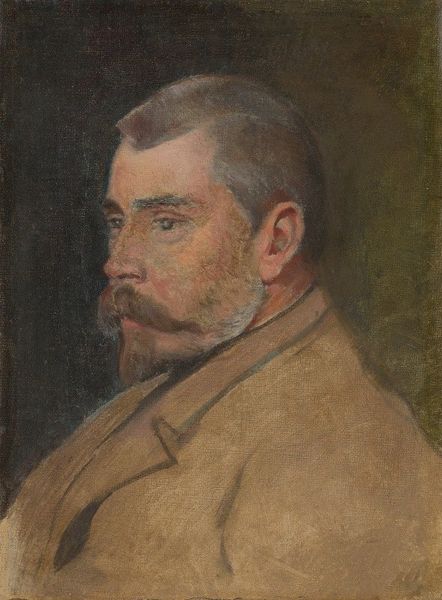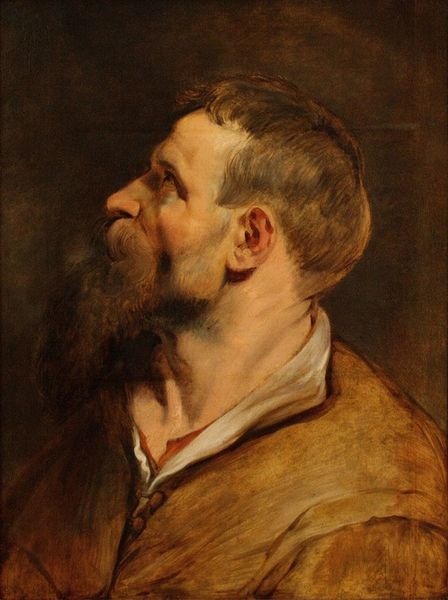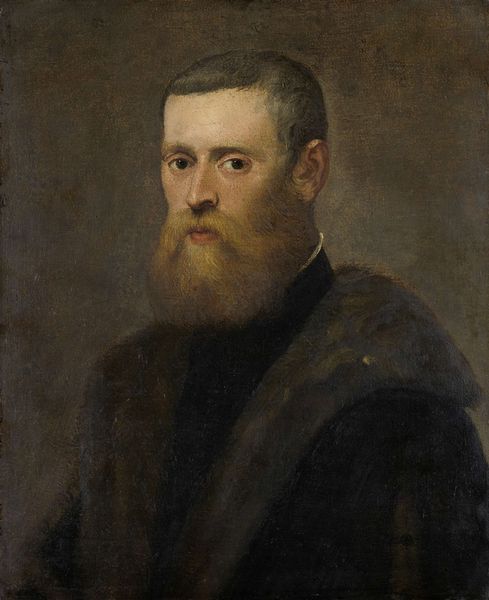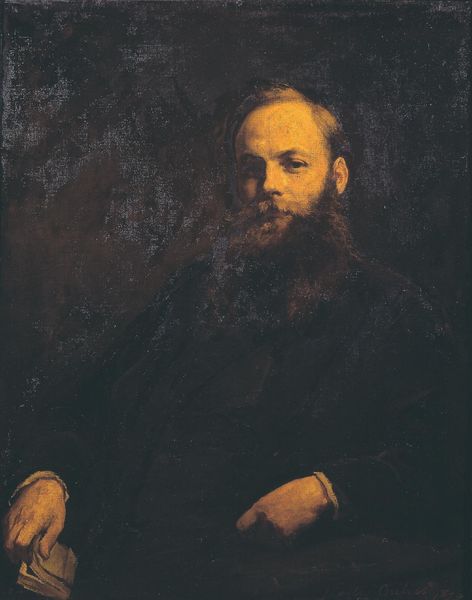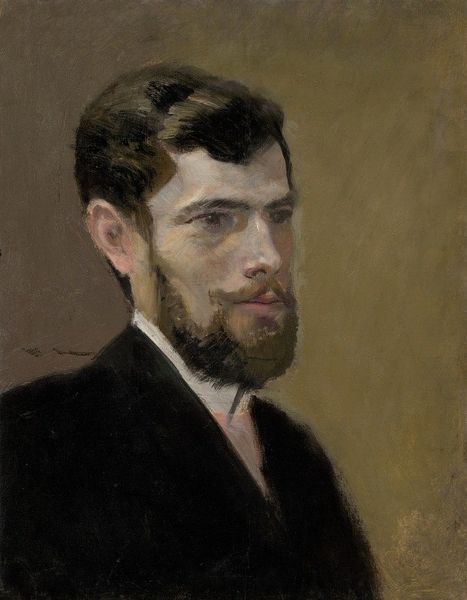
painting, oil-paint
#
portrait
#
portrait
#
painting
#
oil-paint
#
figuration
#
11_renaissance
#
northern-renaissance
#
realism
Dimensions: 13 × 10 3/8 in. (33 × 26.2 cm) Painted surface: 13 × 10 1/8 in. (33 × 25.7 cm)
Copyright: Public Domain
Curator: Standing before us is “Portrait of a Man” by Martin Schaffner, an oil painting dating back to 1520 to 1530, during the Northern Renaissance. Editor: It's a striking image; that fur collar positively radiates wealth. I can almost feel the weight of it. There's a certain stoicism in his expression too. Curator: The subject’s fur immediately draws our attention to questions of status, resources and craft. Consider the trapping, tanning, and sewing required, which highlights the division of labor prevalent in Augsburg at this time. How was it sourced and how did that impact the local ecosystems, social hierarchy and consumerism? Editor: Precisely, but let’s delve into who he is, and what such garments symbolized. The sumptuous furs immediately communicate power and position within the rigid social hierarchy of the time. We can question how this display is deeply intertwined with the politics of the era and gender dynamics. Who was afforded the privilege to be painted like this and what did it mean in society? Curator: And what about the artist's access to resources? Think of the pigments, the oil, the wood for the panel – each component tells a story of procurement, trade, and workshop practices. Was it locally sourced, and what can this painting reveal about global and local commerce networks? Editor: Good points! The gaze too seems intentionally averted, not directly engaging, suggesting perhaps an avoidance of any scrutiny or deeper challenge. It makes one wonder about his engagement or detachment with the world around him, doesn't it? A quiet statement of power, a sort of complicity in the order of things. Curator: I see what you’re saying. And beyond interpretation, consider how the painter himself, Schaffner, gained the materials for such detailed portraits. He likely relied on specific workshops for wood panels, apprentices grinding pigments – all contribute to our understanding of artistic production during the Renaissance. Editor: Indeed, by looking through that historical and social lens, we challenge idealized notions of individualism or artistic genius of the time. It forces us to confront realities of a society rooted in power and prestige, carefully composed and consciously displayed. Curator: Examining the material elements has reshaped my understanding, highlighting production methods and consumption, going beyond aesthetics alone. Editor: And for me, dissecting the social, political, and personal dynamics opens up more compelling dialogues about human ambition, identity, and even the morality of an era reflected on this canvas.
Comments
No comments
Be the first to comment and join the conversation on the ultimate creative platform.
